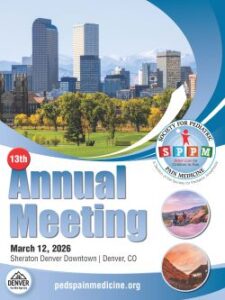{“questions”:{“zktug”:{“id”:”zktug”,”mediaType”:”image”,”answerType”:”text”,”imageCredit”:””,”image”:””,”imageId”:””,”video”:””,”imagePlaceholder”:””,”imagePlaceholderId”:””,”title”:”Emma, a 10-year-old girl, has been experiencing chronic musculoskeletal pain for the past six months. Her parents report that she often has difficulty falling asleep and wakes up frequently throughout the night. Despite trying various bedtime routines, Emma’s sleep problems persist, and she frequently complains of feeling tired during the day. Her pediatrician has noted that Emma’s pain seems to be worse on days following poor sleep, and her response to pain medication has been inconsistent. Given Emma’s chronic pain condition and sleep disturbances, her pediatrician is considering different strategies to help improve her sleep quality and manage her pain more effectively.
Question of the Month – July 2024
{“questions”:{“qz8bx”:{“id”:”qz8bx”,”mediaType”:”image”,”answerType”:”text”,”imageCredit”:””,”image”:””,”imageId”:””,”video”:””,”imagePlaceholder”:””,”imagePlaceholderId”:””,”title”:”An 18-month-old female presents for right hip open reduction, capsulorrhaphy, adductor tenotomy, iliopsoas lengthening, and pelvic osteotomy +\/- femoral osteotomy. As part of the procedure, she will undergo bilateral hip arthrograms. She will have a spica cast applied at the end of the procedure. She has a history of developmental hip dysplasia and recurrent hip dislocations but is otherwise healthy. She has not had anesthesia before.\r\n
Question of the Month – June 2024
{“questions”:{“aut5f”:{“id”:”aut5f”,”mediaType”:”image”,”answerType”:”text”,”imageCredit”:””,”image”:””,”imageId”:””,”video”:””,”imagePlaceholder”:””,”imagePlaceholderId”:””,”title”:”You are consulted for a 1-hr-old 34-week, 2 kg infant who was born to a GIP1 mother with a history of severe OI and chronic pain who has been taking methadone 15mg TID during the pregnancy. Mother is unavailable, but father is at bedside and reports mother has been slowly weaning her dose of methadone from a daily dose of 100 mg a day to limit fetal exposure. She has also received prn hydrocodone\/acetaminophen, for a recent fracture and has used 40mg hydrocodone in the last 48 hours. Father reports fetal ultrasounds showing limb length discrepancies and evidence of possible in-utero rib and limb fractures.
Question of the Month – May 2024
{“questions”:{“c64yr”:{“id”:”c64yr”,”mediaType”:”image”,”answerType”:”text”,”imageCredit”:””,”image”:””,”imageId”:””,”video”:””,”imagePlaceholder”:””,”imagePlaceholderId”:””,”title”:”An 18-year-old female presents to your office with intermittent unilateral shooting pain localized to her left costal margin for the past 10 months. The pain is worse when laughing or twisting her torso. She occasionally feels a popping sensation associated with the pain. She is a gymnast who trains 20+ hours weekly, though does not endorse any inciting accident or activity causing the pain. On physical examination, you note that she is hypermobile in her shoulders with tenderness to palpation of her left costal margin. You send her for a dynamic ultrasound of her ribcage.
Question of the Month – April 2024
{“questions”:{“71ld7”:{“id”:”71ld7″,”mediaType”:”image”,”answerType”:”text”,”imageCredit”:””,”image”:””,”imageId”:””,”video”:””,”imagePlaceholder”:””,”imagePlaceholderId”:””,”title”:”A 15-year-old previously healthy female was referred by dermatology for widespread itching refractory to multiple dermatologic treatments. Careful history suggested the itching sensations may have a neuropathic quality similar to paresthesias. As a pain physician comfortable with neuropathic medications, the referring physician would like you to consider a trial of gabapentin related to a possible small fiber neuropathy. On follow up, the patient reports >50% improvement in itching with low doses of gabapentin. As this is the first treatment to reduce symptoms, her mother would like to know why it helped when other treatments failed and whether she has a small fiber neuropathy.
- « Previous Page
- 1
- 2
- 3
- 4
- 5
- 6
- …
- 11
- Next Page »
 SPPM 13th Annual Meeting
SPPM 13th Annual Meeting